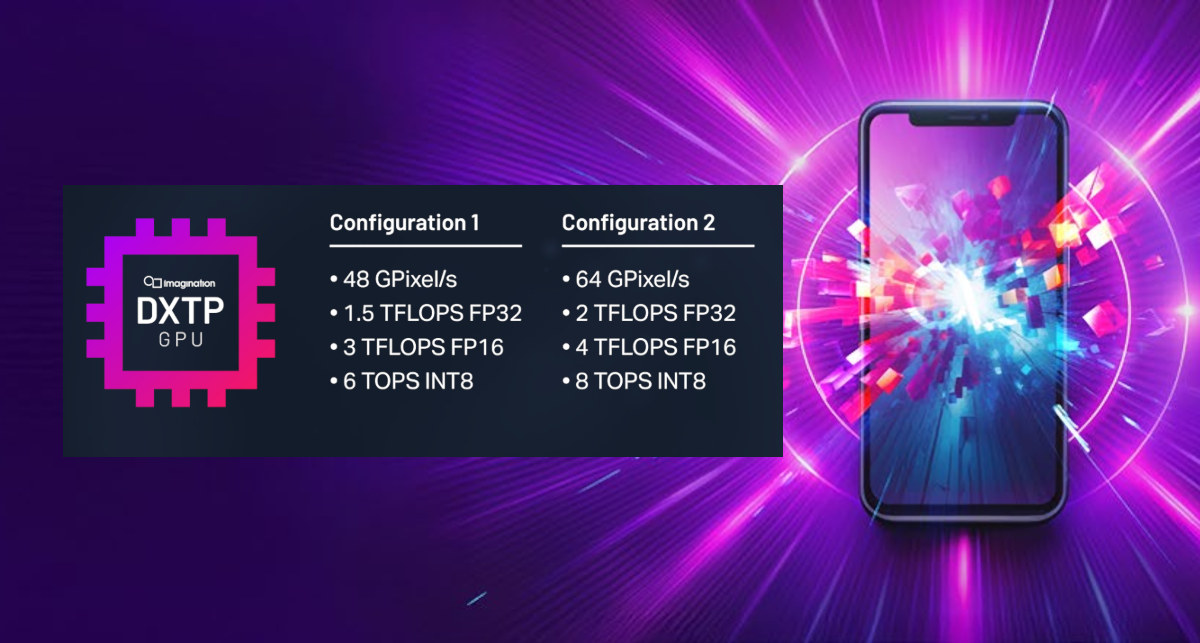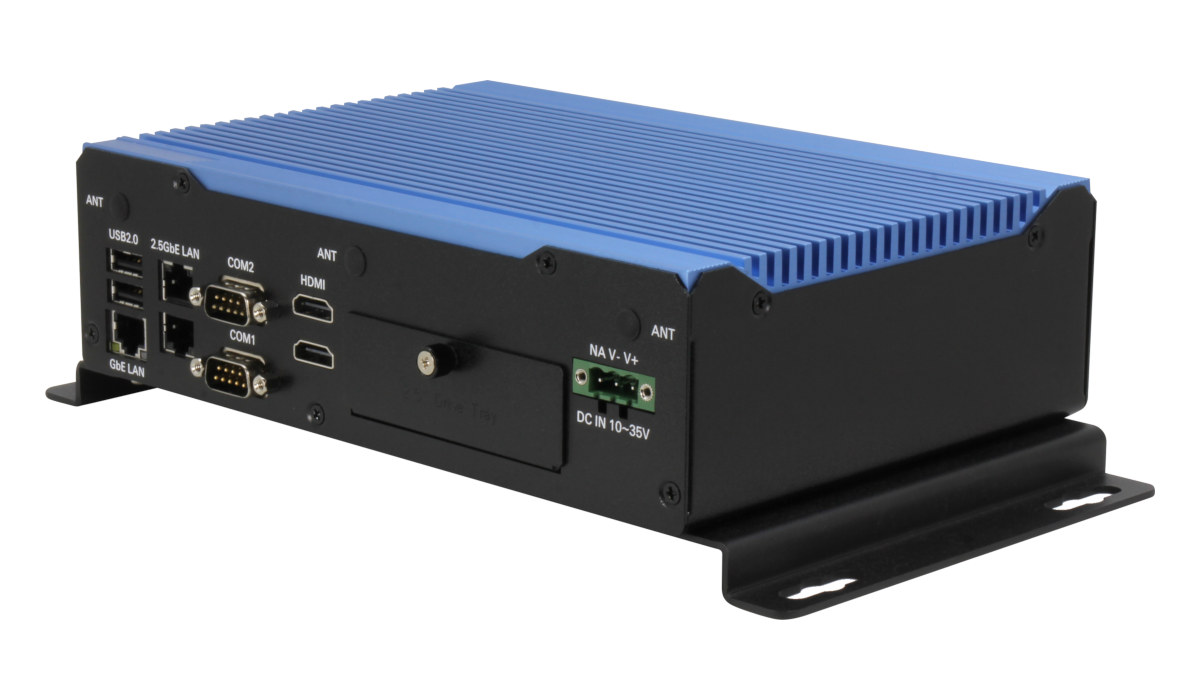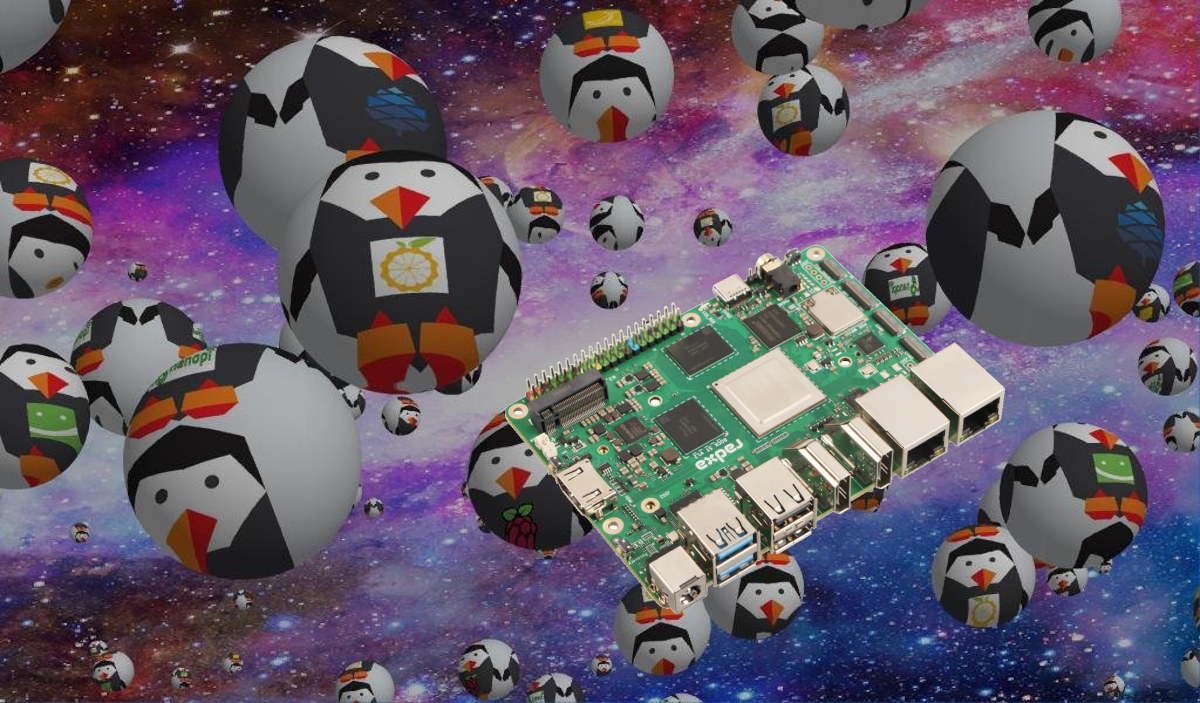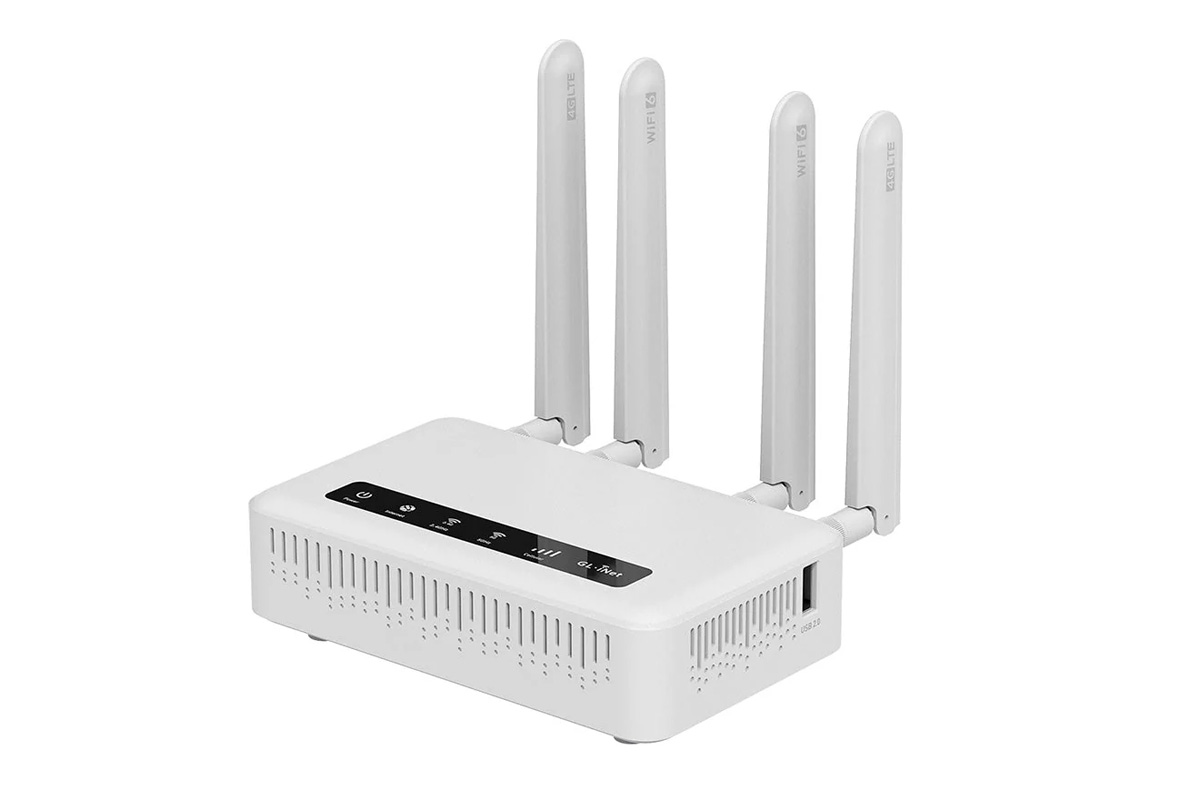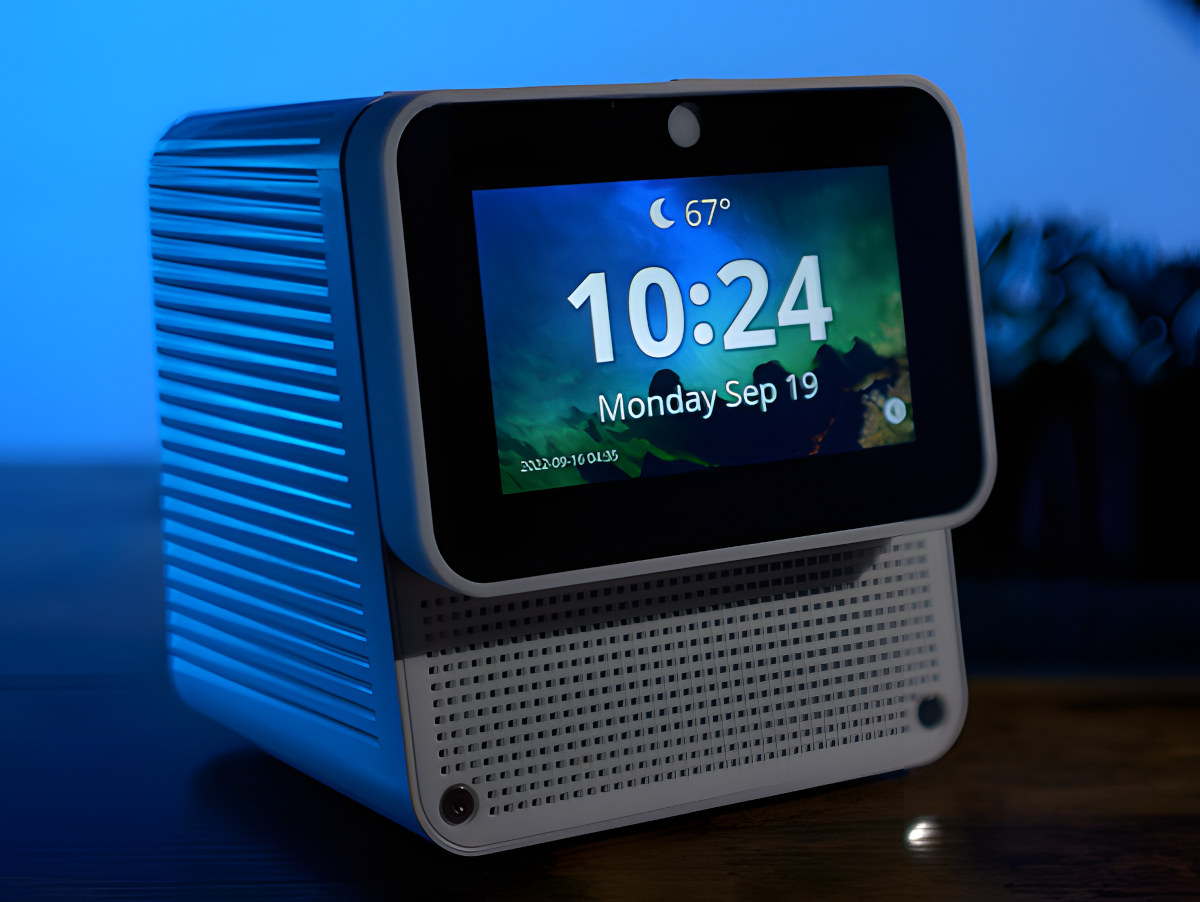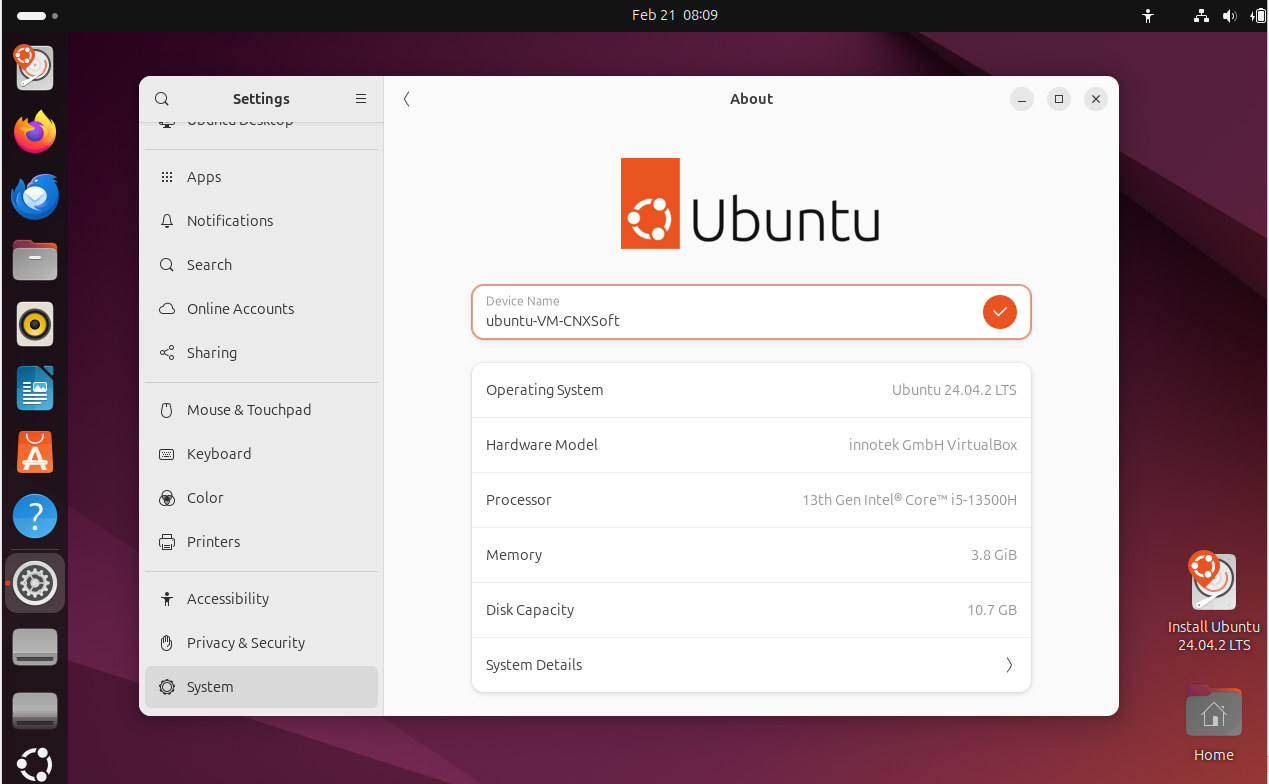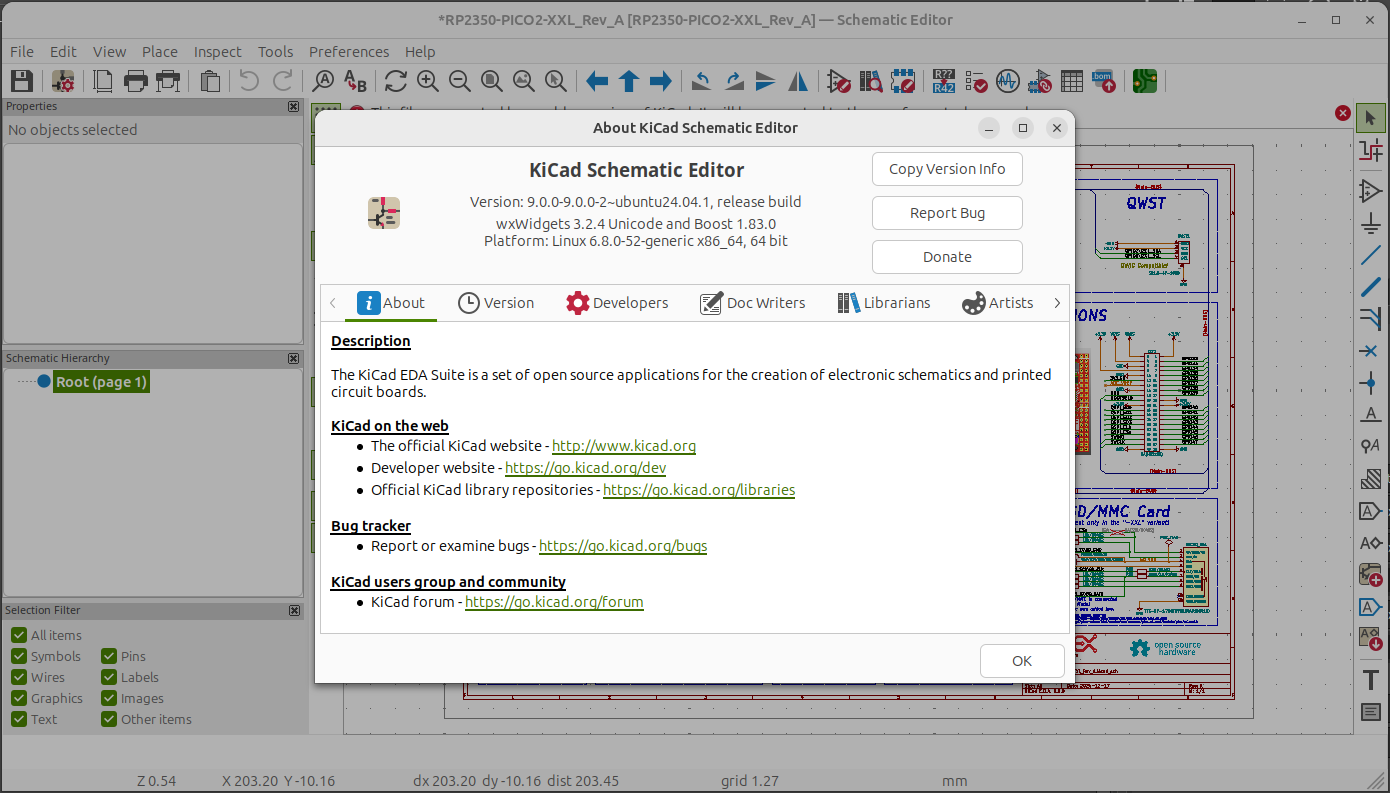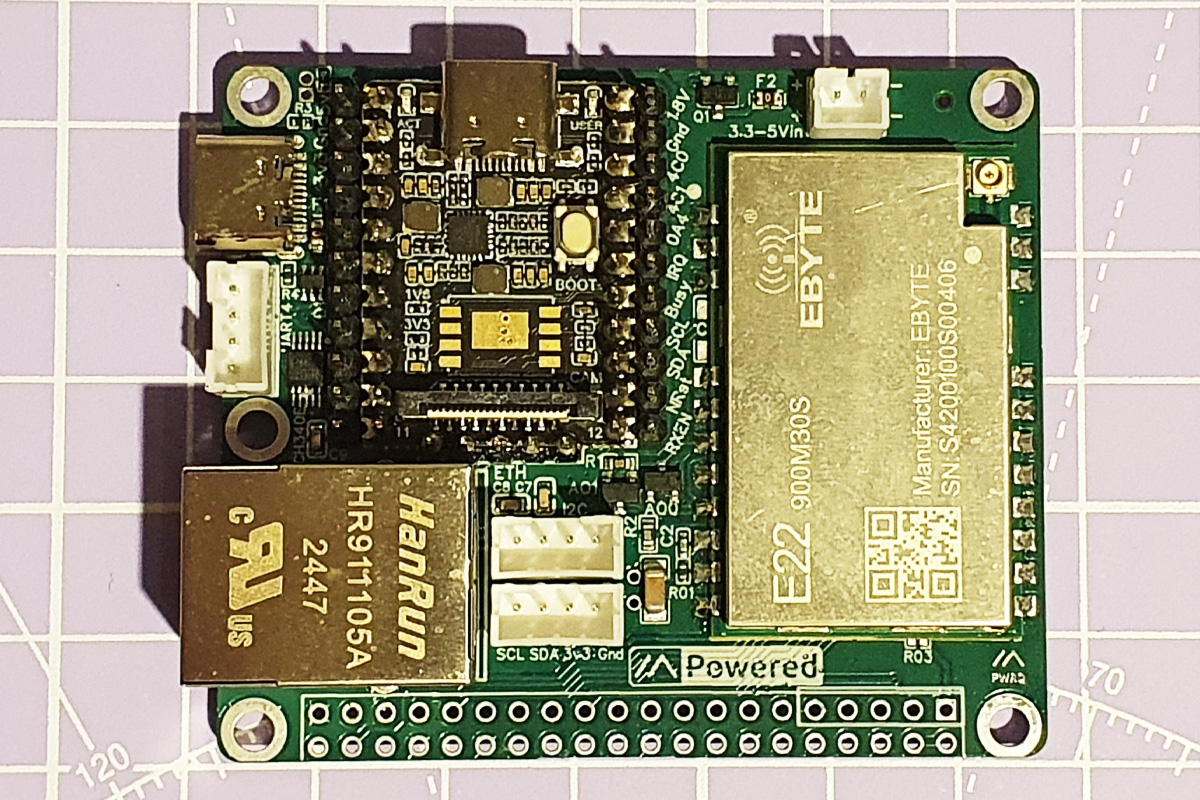Imagination has announced the DXTP GPU for mobile and power-constrained devices with up to 20% greater power efficiency than its predecessor, the D-Series DXT GPU for longer battery life for AI applications or complex games. The company says the GPU is suitable for gaming, user interfaces, graphics-rich applications, computer vision, generative AI, and other AI applications designed to run on smartphones, tablets, laptops, desktops, or non-safety automotive products. Imagination DXTP highlights: Two off-the-shelf configurations: DXTP-48-1536 48 GPixel/s 1.5 TFLOPS FP32 (1536 FLOPs/Clock) 3 TFLOPS FP16 6 TOPS INT8 48 ppc Bilinear 3D Textured Up to 96 ppc 2D Dual Rate Mode DXTP-64-2048 64 GPixel/s 2 TFLOPS FP32 (2048 FLOPs/Clock) 4 TFLOPS FP16 8 TOPS INT8 64 ppc Bilinear 3D Textured Up to 128 ppc 2D Dual Rate Mode Bus Interface – AXI, ACE-Lite Compression PVRIC5 Lossless and Lossy Framebuffer Compression ETC and ASTC LDR and HDR Support Microarchitecture improvement – […]
AAEON BOXER-6647-MTH Meteor Lake embedded Box PC features screwless SATA and M.2 M-key trays
AAEON BOXER-6647-MTH is an embedded Box PC powered by Intel Core Ultra 7 155H or Core Ultra 5 125H Meteor Lake processor, and mainly designed for advanced industrial robotics solutions such as AGV (Automated Guided Vehicle) and AMR (Autonomous Mobile Robot). The rugged computer supports up to 64GB DDR5 RAM, is equipped with screwless external SATA and M.2 M-Key trays, offers 2.5GbE networking, four USB 3.2 interfaces, RS-232/422/485 & DIO for cameras, sensors (LIDAR, IMUs, etc…), and actuators for robotics, as well as wireless and cellular expansion via additional M.2 sockets. AAEON BOXER-6647-MTH specifications: Meteor Lake-H SoC (one or the other) Intel Core Ultra 5 125H 14-core (4P+8E+2LPE) processor @ 1.2 / 4.9 GHz with 18MB cache, Intel 7Xe LPG graphics @ 2.2 GHz, Intel AI Boost NPU; TDP: 28W Intel Core Ultra 7 155H 16-core (6P+8E+2LPE) processor @ 1.4 / 4.8 GHz with 24MB cache, Intel 8Xe LPG graphics […]
Armbian v25.2 and DietPi v9.11 released with updated Ubuntu and Debian-based Linux images for single board computers
Vendor-provided Linux images for single board computers are not always working optimally, so this post is a regular reminder that users may want to check out Armbian and DietPi projects mostly supported by the community but also backed by some of the vendors who offload some (repackaging) software work to them. Armbian and DietPi are separate projects, but this month, Armbian v25.2 and DietPi v9.11 were almost released simultaneously. I don’t report on each release (should I?), but they release an update every few months. The last time we had a look at both projects was in September 2024 for the releases of DietPi 9.7 and Armbian 24.8. Let’s see what the new releases have to bring. Armbian v25.2 Main changes: New Boards – Rock 2A and 2F, NanoPi R3S, Retroid Pocket RP5, RPMini, Rock 5T, GenBook, MKS-PI, SKIPR, Armsom CM5, NextThing C.H.I.P, Magicsee C400 Plus Rockchip 3588 Improvements – […]
GL.iNet Spitz Plus GL-X2000 – An affordable WiFi 6 cellular router with GbE, dual SIM, and load balancing capabilities
GL.iNet Spitz Plus GL-X2000 is a Wi-Fi 6 cellular router with GbE networking, two nano SIM slots, interchangeable high-gain antennas, and more. It is built around a Qualcomm IPQ5018 dual-core 1 GHz SoC and supports AX3000 Wi-Fi speeds with data rates of up to 574 Mbps on 2.4GHz and 2402 Mbps on 5GHz. Other features include support for multi-WAN connectivity, failover, and load balancing for stable connections, it also comes with preinstalled VPN support for over 30 providers. It also has remote management features that allow users to monitor data usage, update firmware, and troubleshoot through a centralized interface. The device is available in different LTE variants for North American and international markets, supporting region-specific bands. These features make this router useful for applications such as remote work, mobile offices, industrial IoT, and backup connectivity in areas with unreliable broadband. GL-X2000 (Spitz Plus) specifications: SoC – Qualcomm IPQ5018 dual-core Cortex-A53 […]
The OpenVoiceOS Foundation aims to enable open-source privacy and customization for voice assistants
The OpenVoiceOS Foundation, or OVOS Foundation for shorts, is a non-profit organization dedicated to advancing open-source voice assistant technology and offers an open-source privacy-focus alternative to voice assistant by large companies like Amazon, Google, and Apple. One of the founders, Peter Steenbergen (j1nx), explained to us it all started when he read an article on CNX Software about Mycroft Mark II voice assistant hardware in 2018. He ended up being involved and created “MycroftOS“, later renamed to “OpenVoiceOS – Mycroft Edition”, as a Just Enough OS utilizing Buildroot and working on the Mark II. There were some tensions with the open-source community at some point, and the Mycroft project went south from there and the company had to close in 2023. Eventually, OpenVoiceOS took over the codebase of Mycroft A.I. and managed to merge lingering PR from the open-source community. Together with NEON A.I., they took over the Mycroft A.I. community […]
Ubuntu 24.04.2 released with Linux 6.11 kernel and hardware enablement stack
Ubuntu 24.04.2 has just been released with Linux 6.11 kernel and hardware enablement (HWE) stack. I would typically not care too much about a point release, but our reviews of mini PCs have shown Ubuntu 24.04 with Linux 6.8 was not always well supported with recent mini PC, mostly due to issues with WiFi or Bluetooth, but sometimes it’s even worse. The most common problem I encountered was that MediaTek MT7922-based WiFi 6 and Bluetooth 5.3 module would not support Bluetooth on Ubuntu 24.04 unless we updated the Linux kernel to version 6.10 or newer. Mini PCs with recent processors like the Khadas Mind 2 AI Maker Kit based on Intel Core Ultra 7 258V AI SoC required even more tweaks for HDMI audio, GPU, and WiFi + Bluetooth which is why I tested it with Ubuntu 24.10 instead. Ubuntu 24.04.2 should solve all of those issues. The announcement explains […]
KiCad 9 released with support for embedded files, tables in schematics, custom ERC/DRC errors, mouse scroll wheel actions, and more
KiCad 9 open-source EDA software has just been released with a range of new features such as support for embedded files (fonts, 3D files, PDF), tables in schematics, custom ERC/DRC errors, warnings, and exclusion comments, mouse scroll wheel actions, multiple track drag, and much more. The latest KiCad 9.0.0 release includes 4,870 unique commits from hundreds of developers and translators, and the KiCad library has further gained 1500 new symbols, 750 new footprints, and 132 new 3D models. There are way too many changes to list them all here, so I’ll mention some highlights here: Jobsets (predefined output jobs) – Feature that provides predefined sets of ‘jobs’— plotting, exporting, and running DRC—on schematics and PCBs. Independent jobset files are reusable as users may want to create output pipelines that they can apply across their projects for consistency. Jobsets can be run from the command line or the KiCad GUI. Embedded […]
Femtofox Pro v1 LoRa and Meshtastic development board runs Linux-based Foxbuntu OS on Rockchip RV1103 SoC
The Femtofox Pro v1 kit is a compact, low-power LoRa and Meshtastic development board running Linux specially designed for Meshtastic networks. Built around the Luckfox Pico Mini (Rockchip RV1103) SBC, this compact development platform supports USB host/device functionality, Ethernet, WiFi over USB, GPIO interfaces, I2C, UART, and a real-time clock (RTC). The most unique feature of this board is that it operates at very low power (0.27-0.4W), making it ideal for solar-powered applications. Additionally, Femtofox supports native Meshtastic client control, USB mass storage, and network reconfiguration via a USB flash drive. It also includes user-configurable buttons for WiFi toggling and system reboot, enhancing its usability. These features make Femtofox particularly useful for applications such as emergency response and off-grid messaging. Femtofox Pro v1 kit specifications Mainboard – Luckfox Pico Mini A SoC – Rockchip RV1103 SoC CPU – Arm Cortex-A7 processor @ 1.2GHz + RISC-V core Memory – 64MB DDR2 […]


